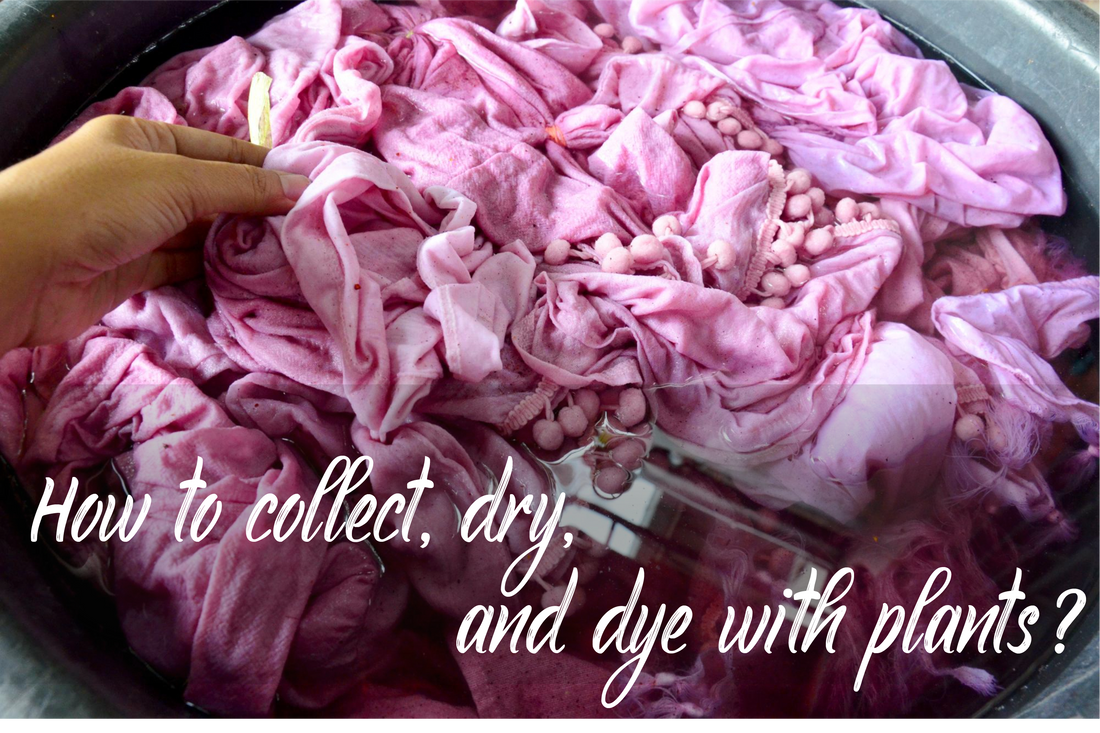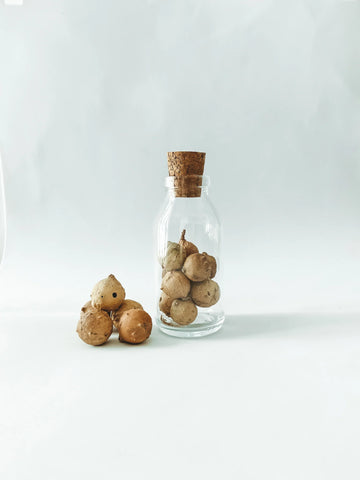
Introduction to Dying with Plants: How to collect, dry, and dye with plants?
 The use of natural ingredients, naturalness and being close to nature are experiencing a renaissance. We are slowly reviving our grandmothers ’heritage, soap-making, various old-forgotten flavours, techniques, weaving, spinning - painting with plants, among other things.
The use of natural ingredients, naturalness and being close to nature are experiencing a renaissance. We are slowly reviving our grandmothers ’heritage, soap-making, various old-forgotten flavours, techniques, weaving, spinning - painting with plants, among other things.
When it comes to painting with plants, a lot of people think of egg painting first. No wonder, as it is one of the first things we can do at home and easily - so as we approach Easter, we can make the eggs cooked in purple or brownish red by cooking them in an onion peel.
Recognizing the most perfect painting plants required the experience of many, many generations. It was necessary to know when to collect, how to store, whether the particular plant could be grown. An essential feature of a good painter is that the dye material can be easily extracted from it, and after dyeing, the material retains its colour for a long time without fading when exposed to light or moisture.
Anyone who wants to try plant-based paint dying these days faces a number of obstacles. On the one hand, the knowledge required for this is almost completely missing from our ordinary knowledge base, and unfortunately, we cannot make a large selection in the literature.
If we search in nature, we may run into obstacles because many plants are now protected or highly protected, so collecting them in nature is forbidden. If we are lucky and have the opportunity to collect an unprotected painting plant, then there is no harm in being careful: do not fall on the bushes, trees, do not bald them completely, leave them to those who come after us and last but not least to the birds. After all, many crops suitable for painting are a vital winter food for our birds. In the forest, in the parks, but also in our own garden and in our household, we can find many plants that are not only eye-catching or gastronomic, but also excellent for obtaining paint from them. Examples are onion peel, carrot, turmeric, saffron, walnut shell.
Collection, drying:
Most plants can be used equally fresh or dried. Dry the plants in a shady, airy place, spread them out, tie them in a bunch and hang them. Be careful, because the sun is taking their colour! Whether this way or shredded, it can be stored in a canvas bag until used. Freshly picked berries can also be stored in the freezer.
How to dye with natural dye on fabric?
Only dye textiles of natural origin with plant dyes because plant dyes do not completely trap the synthetic fibres.
The textile is first pre-treated, i.e. boiled in alkaline water. This will soften the textile fibres and make it easier to absorb the dye. The preparation is carried out in soapy water. We can count with 3-4 litres of water for ten dkg of wool or cotton, in which we dissolve a quarter of washing soap beforehand. The raw wool is heated over low heat for half an hour, the cotton is cooked more vigorously in it for an hour. After cooking, the material is rinsed several times in cold water.
For mordanting during dyeing, a separately prepared concentrated solution of the metal salt is mixed into the dye and only then is the wet fabric added. Be careful not to leave undissolved chemicals at the bottom of the pot, as this may stain the paint! After mordanting, the already coloured textile is opened and placed in the prepared pickle without rinsing, cooked for 30-40 minutes, rinsed after lifting and twisting.
The purest colours are obtained by mordanting before painting. The dye mixture and mordant solution can be used several times to obtain an increasingly fading hue. The used and vaporized chemicals have to be refilled every time with approximately the half of the original amount.
The plant parts with a high tannin content, such as oak buds, oak bark, alder, spruce and birch bark, tan leaves, give a lasting brown colour even without special mordanting. Therefore, when boiled with other plants, they can be used to bind dyes, especially on plant fibres. However, we should expect the original colours to be tanned.
 |
 |
 |
Follow our blog to learn about mordants in detail next week.


